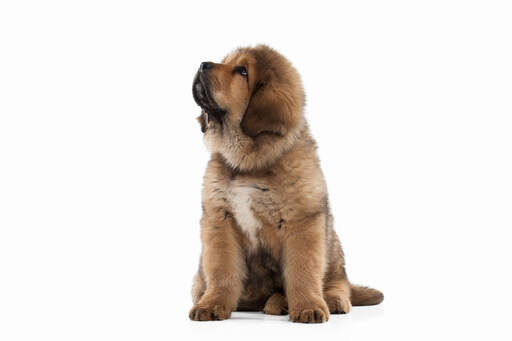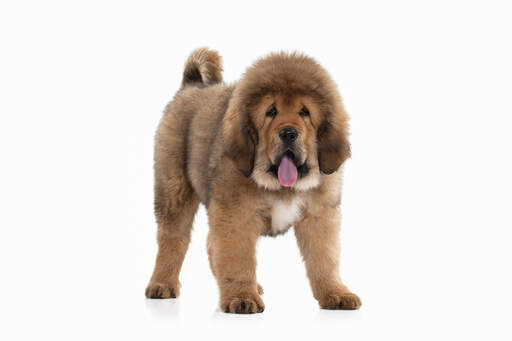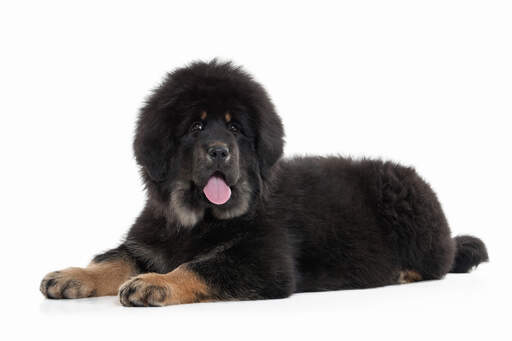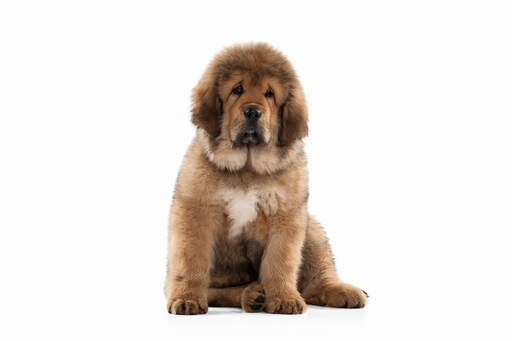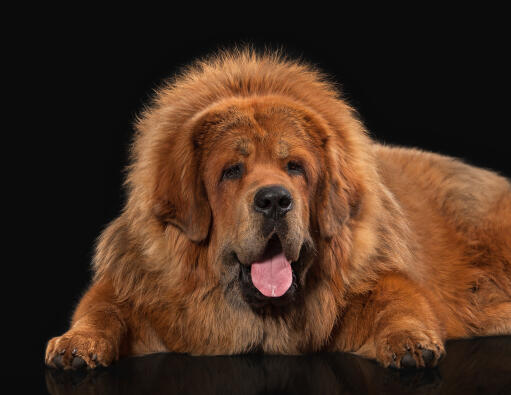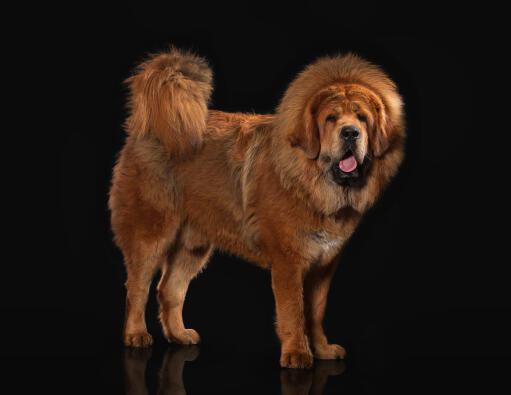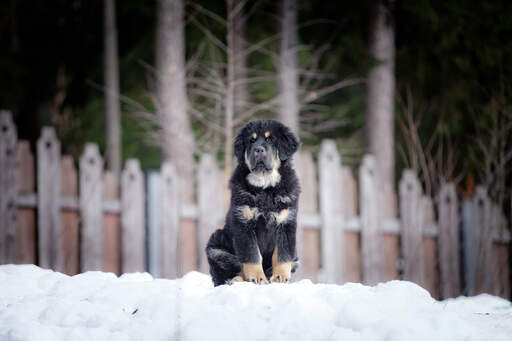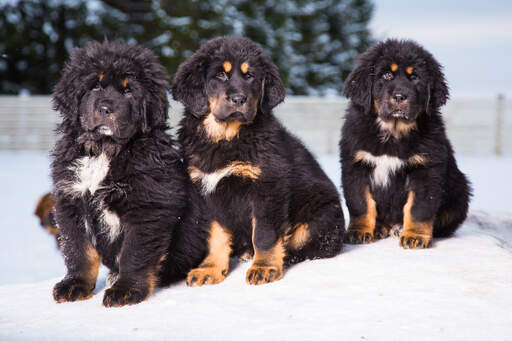Tibetansk Mastiff-hund










History
The Tibetan Mastiff originates from Tibet and has been around for thousands of years. The breed was used to guard people, livestock and protect property, including Temples, Monasteries and nomadic farmers. The dogs roamed far and wide with their owners and as such, there was no breed standard; dogs interbred for years. It was finally accepted into the American Kennel Club in 2005.
Behaviour
These huge dogs are confident, intelligent and courageous. They are completely devoted to their family and very good with children in the home. They were bred to guard and that is what they do best. They can sometimes be concerned about strange children visiting the home, especially when voices are raised. Best suited to families with older children who understand how to behave around a large dog. They are naturally wary of strangers, but unlikely to be aggressive. Very early socialisation will stop them becoming too protective over who enters the house and will prevent future problems. They need to learn that you decide who enters the home, something they have difficulty with due to their guardian ways. They are incredibly gentle with their own family and fine with cats and other pets in the house. They get on well with other dogs and are rarely aggressive towards them. Bred to be independent and strong willed, the Tibetan Mastiff is tricky to train. He can learn, but usually believes that he knows better than you, especially when it comes to guarding behaviour. It is vital to socialise them thoroughly from an early age, taking them to different places, meeting lots of people and inviting different people into your home. Their breeding makes for a tough time when it comes to obedience. They like to decide what to do and will often flatly refuse to listen to you. Even though they are devoted to you and love being close, they are still so stubborn that your commands fall on deaf ears. Constant, consistent training is the key, well in to adulthood. As with all large breeds, having control over them is essential. These are strong powerful dogs who need firm discipline. They take a long time to mature fully, around 3-5 years, with females only coming into season once a year instead of the usual twice. As puppies, they can be destructive if they are bored, so are best if someone is around for most of the day. They require a decent walk every day, but aren't demanding when it comes to exercise. Recall is hopeless, so a secure area or walked on a lead is best. They are usually quite placid in the house and like to sleep close to you.
Tibetan Mastiffs suffer few major health concerns, but Canine Hip Dysplasia and seizures are sometimes seen.
Temperament
Tibetan Mastiffs have an independent and strong willed temperament. They are very self assured and confident in their ability to make decisions for themself on who is friend or foe. This is because of their strong protective instincts to guard a flock from any threat. This does mean that a Tibetan Mastiff will not be the most affectionate or playful of breeds but will treat all strangers with suspicion until they have made up their mind about that stranger.
Health Problems
Health problems that may affect Tibetan Mastiffs include canine hip dysplasia (CHD), elbow dysplasia, bone disease, eyelid problems, bloat and epilepsy.
Breed Details
- Status: Common
- Life Expectancy: 10 - 14 years
- Weight: 48 - 82 kg
- Højde: 24 - 26"
- Rare: Nej
- Coat: Medium
- Grooming Requirements: More than once per week
- Town or Country: Either
- Minimum Home Size: Large House
- Minimum Garden Size: Small to Medium Garden
- Breed Type: Working Dog
- Størrelse: Giant
- Energy Level: Low
- Exercise Required: Up to 1 hour

